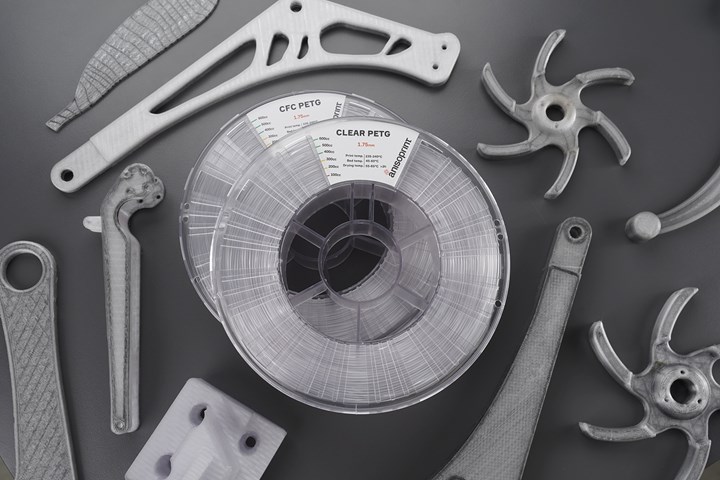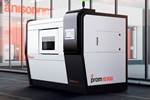Anisoprint launches Clear PETG, CFC PETG for continuous fiber 3D printing
Anisoprint provides Composer 3D printer users and novice customers a new formulation material that produces stable and reliable quality results.

Clear and CFC PETG filaments. Photo Credit: Anisoprint
Anisoprint (Esch-sur-Alzette, Luxembourg), a continuous fiber 3D printing systems and software OEM, is introducing and , a second pair of filaments for desktop Anisoprinting. Developed for use with Composer A4 and A3, PETG is a universal and effective material for composite fiber co-extrusion (CFC). The material is paired with a proprietary profile in slicer library, which the company says guarantees high standard quality and predictable properties. The announcement aligns with Anisoprint’s goal to continuously update the library with new materials and profiles.
According to Artem Naumov, Anisoprint head of materials, Clear PETG and CFC PETG have been intensively tested. Easy to handle, the transparent PETG material is said to be ideal for beginners. It is characterized by good flowing properties for easy printing, — as well as use for co-extrusion — enables printing in very thin layers while adhering to optimized surface quality and geometric accuracy and maintains a natural adhesion to reinforcing fibers.
The filaments feature high mechanical properties such as wide working temperature range (-40°C to +70°C), good durability, resistance to fats and mineral acids, etc. They also offer low absorption rate (eliminating the need to use a drybox if the humidity of the storage facility is low enough) and are fully odorless during printing.
The new material is now available for all users of 3D printers, and is offered as the default basic printing option for novice customers.
Related Content
-
Scaled Composites Model 437 aircraft to be flown for Beacon autonomy testbed
Northrop Grumman subsidiary part of Digital Pathfinder development of stealth aircraft with wings using continuous carbon fiber additive manufacturing and determinate assembly.
-
Multi-material, self-sensing, 3D-printed scoliosis braces
Startup Fited and Brightlands Materials Center have developed a lighter weight, thinner CFRP corrective brace, including pressure sensors made from continuous carbon fibers.
-
Eaton developing carbon-reinforced PEKK to replace aluminum in aircraft air ducts
3D printable material will meet ESD, flammability and other requirements to allow for flexible manufacturing of ducts, without tooling needed today.



